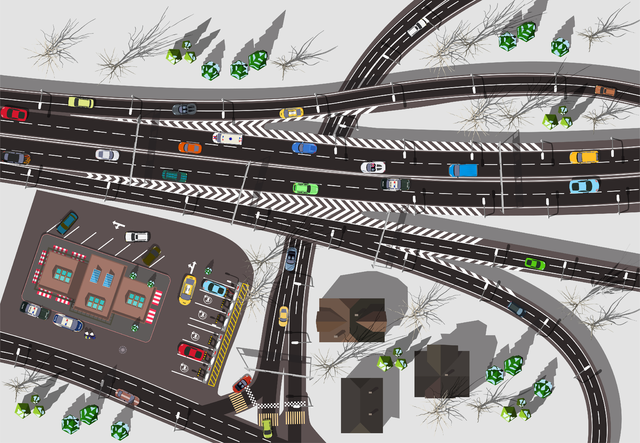Managing traffic is a key component of contemporary urban planning. It is now vital to design efficient and effective traffic management techniques due to the rise in vehicle traffic. Using numerous strategies aimed at minimising traffic jams, promoting safety, and improving traffic flow is known as traffic management. In this essay, we’ll go over some fundamental traffic management ideas that work in any city or town.
Knowing how the traffic moves
Understanding the local traffic flow is the first step in efficient traffic management. This entails examining traffic flow patterns, figuring out peak times, and pinpointing the regions where congestion is most likely to happen. Surveys of traffic patterns, GPS tracking, and other data gathering techniques can be used to get this information. Once this information has been gathered, it can be used to create plans for better traffic control.
Creating a thorough traffic plan
Effective traffic management requires a thorough traffic plan. This strategy needs to include actions like lane designation, speed limits, and traffic signal timing. It ought to include plans for handling unexpected situations and emergencies. A good traffic plan should be routinely updated and flexible enough to adjust to shifting traffic patterns.
Technology-Assisted Traffic Management
The use of technology is crucial for traffic control. Intelligent transportation systems (ITS) can be used to track traffic patterns, spot accidents, and give drivers real-time information. To improve traffic flow and traffic signal timing, this information can be employed. To manage traffic more efficiently, additional technology like traffic cameras and variable message signs can be deployed.
Encouragement of Sustainable Transportation
One crucial aspect of traffic management is promoting environmentally friendly transportation. This involves encouraging people to bike, walk, or take public transportation. It is possible to lessen air pollution and traffic congestion by reducing the number of single-occupancy vehicles on the road. To promote sustainable mobility, cities can also invest in infrastructure like bike lanes and pathways for pedestrians.
Pedestrian and Vehicle Education
Promoting safe and responsible driving behaviour requires education. Traffic rules and legislation must be understood by drivers and pedestrians, as well as the safe use of crossings and roadways. Safety driving practises including using seat belts, avoiding distractions, and obeying traffic signals can all be promoted through education campaigns. Also, pedestrians must to be taught the best ways to cross the street safely, like using crosswalks and waiting for traffic signals.
Working together with Stakeholders
Collaboration between numerous stakeholders, such as local officials, transportation organisations, and the general public, is necessary for effective traffic management. Stakeholders can collaborate to create plans for better traffic management, and they can also offer insightful input on the performance of current traffic control systems. Collaboration can also be utilised to create solutions to localised traffic issues, such enhancing local public transportation options.
Conclusion
Although it is a difficult and complex job, traffic management is crucial for guaranteeing the effectiveness and safety of urban transportation systems. Cities may efficiently manage traffic and enhance the quality of life for their citizens by comprehending the flow of traffic, creating thorough planning, utilising technology, supporting sustainable mobility, educating drivers and pedestrians, and working with stakeholders. Traffic management may be a potent instrument for building more liveable and sustainable cities with the correct techniques and a commitment to continuous development.
The Traffic Plans Company specialise in quality traffic management plans and planning around Melbourne and other areas of Australia.

